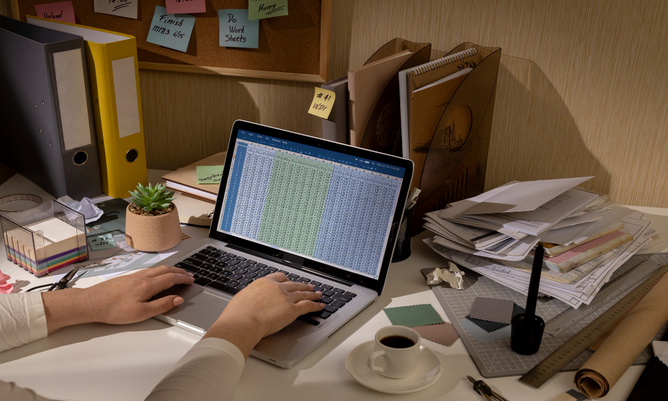Setting up inventory in QuickBooks Desktop is a crucial step for businesses that deal with physical products. Properly managing inventory ensures accurate financial reporting, efficient order fulfillment, and effective decision-making. QuickBooks Desktop offers robust inventory management features that can help streamline your operations. In this comprehensive guide, we’ll walk you through the process to setup inventory in QB Desktop step by step.
Understanding Inventory in QuickBooks Desktop
1. Inventory Basics: Learn about the different types of inventory items in QB Desktop, including inventory parts, non-inventory parts, and services.
2. Inventory Tracking: Understand how QuickBooks Desktop tracks inventory quantities and costs, enabling you to make informed business decisions.
3. Costing Methods: Explore the various costing methods available in QuickBooks Desktop, such as FIFO (First In, First Out) and Average Cost, and choose the one that best suits your business needs.
Must Read:- How To Fix QuickBooks Desktop Has Stopped Working Error?
Step-by-Step Process to Setup Inventory in QB Desktop
1. Prepare Your Inventory Data
Before you start setting up inventory in QB Desktop, it’s essential to gather all the necessary information about your products. This includes:
- Product names or SKUs (Stock Keeping Units)
- Description of each product
- Cost price
- Selling price
- Quantity on hand
- Reorder point (the level at which you should reorder the product)
- Vendor information (if applicable)
- Make sure to organize this information in a spreadsheet or document for easy reference during the setup process.
2. Enable Inventory Tracking
The first step in setting up inventory in QB Desktop is to enable inventory tracking. To do this:
- Open QuickBooks Desktop.
- Go to the Edit menu and select Preferences.
- In the Preferences window, select Items & Inventory.
- Check the box that says “Inventory and purchase orders are active.”
- Click OK to save your changes.
- Enabling inventory tracking allows QuickBooks Desktop to track the quantity and value of your inventory accurately.
3. Setup Inventory Items
Now that inventory tracking is enabled, you can start adding your inventory items to QuickBooks Desktop:
- Go to the Lists menu and select Item List.
- Click the Item button at the bottom of the window and choose New.
- Select Inventory Part as the type of item.
- Enter the item name or SKU in the Item Name/Number field.
- Fill in the description, cost, and selling price fields.
- Enter the quantity on hand.
- If you have a reorder point, enter it in the Reorder Point field.
- Click OK to save the item.
- Repeat this process for each inventory item you want to track in QB Desktop.
4. Setup Sales Tax (If Applicable)
If you need to charge sales tax on your inventory items, you’ll need to setup sales tax in QuickBooks Desktop:
- Go to the Lists menu and select Item List.
- Click the Item button at the bottom of the window and choose New.
- Select Sales Tax Item as the type of item.
- Enter a name for the sales tax item (e.g., State Sales Tax).
- Enter the appropriate tax rate.
- Click OK to save the sales tax item.
- You can then assign the sales tax item to your inventory items as needed.
5. Setup Vendors (If Applicable)
If you purchase inventory items from vendors, you’ll need to setup vendor accounts in QB Desktop:
- Go to the Vendors menu and select Vendor Center.
- Click the New Vendor button and enter the vendor’s information, including name, address, and contact details.
- Click OK to save the vendor.
- You can then assign vendors to your inventory items when you purchase them.
6. Enter Opening Balances
If you have existing inventory on hand when you start using QuickBooks Desktop, you’ll need to enter opening balances for your inventory items:
- Go to the Vendors menu and select Inventory Activities.
- Choose Adjust Quantity/Value on Hand.
- Select the appropriate adjustment date and enter the opening quantities and values for each inventory item.
- Click Save & Close to save the adjustments.
- Entering opening balances ensures that QuickBooks Desktop accurately reflects the value of your inventory.
7. Track Inventory
Once you’ve setup your inventory items in QB Desktop, you can start tracking inventory:
- Go to the Reports menu and select Inventory.
- Choose the appropriate inventory report to view information about your inventory items, such as quantity on hand, value, and sales.
- You can also track inventory levels and transactions in real-time using the Inventory Center in QuickBooks Desktop.
8. Reconcile Inventory
Regularly reconcile your physical inventory counts with the quantities recorded in QuickBooks Desktop to ensure accuracy:
- Go to the Reports menu and select Inventory.
- Choose the Physical Inventory Worksheet to print a worksheet for counting your inventory.
- Count your physical inventory and compare it to the quantities recorded in QuickBooks Desktop.
- Make any necessary adjustments to correct any discrepancies.
- Reconciling inventory helps prevent stockouts, overstocking, and discrepancies in your financial records.
9. Get Support
If you encounter any issues or have questions about setting up inventory in QuickBooks Desktop, you can contact QuickBooks Desktop support for assistance at toll-free phone number: +1-855-838-5977. QuickBooks support representatives can provide guidance and troubleshooting to help you get the most out of your inventory management system.
Conclusion
Setup inventory in QuickBooks Desktop is essential for businesses that sell physical products. By following the steps outlined in this guide, you can accurately track your inventory, streamline your operations, and make informed business decisions. Whether you’re just starting or looking to improve your existing inventory management processes, QB Desktop offers the tools and support you need to succeed.
For further assistance or technical support with QuickBooks Desktop, please contact our dedicated helpline at +1-855-838-5977. Our team of experts is available to provide personalized assistance and guidance tailored to your specific needs.
Frequently Asked Questions:
To enable inventory tracking, go to the Edit menu, select Preferences, then choose Items & Inventory. Check the box that says “Inventory and purchase orders are active,” and click OK to save the changes.
Yes, you can import inventory data into QuickBooks Desktop using the Import Data tool. Ensure your data is formatted correctly in a supported file format such as Excel or CSV before importing.
You can adjust inventory quantities in QuickBooks Desktop by going to the Inventory menu, selecting Adjust Quantity/Value on Hand, and entering the appropriate adjustment reason and quantity.
Yes, QuickBooks Desktop allows you to create multiple price levels for your inventory items. You can setup different price levels for different customer types or pricing tiers.








